Two-Generator Discrete Subgroups of Psl (2,R) (Memoirs of the American Mathematical Society) by Gilman, Jane published by Amer Mathematical Society Paperback Products of Groups Bernhard Amberg, Silvana Franciosi, Francesco de GiovanniGroups comprising two subcomponents are of particular interest to group theorists who want to know in what way the structure of the product is related to that of its subgroups. This monograph gives the first detailed account of the most important results of group product research from the past 35 years. Although the emphasis is on infinite groups, relevant theorems about finite products of groups are also proved. This book will be of interest to research students and specialists in group theory, and will be useful in seminars or as a supplement in courses in general group theory. A special chapter on conjugacy and splitting theorems obtained by means of the cohomology of groups has never before appeared in book form.Products of Finite Groups Mohamed AsaadThe study of finite groups factorised as a product of two or more subgroups has become a subject of great interest during the last years with applications not only in group theory, but also in other areas like cryptography and coding theory. It has experienced a big impulse with the introduction of some permutability conditions. The aim of this book is to gather, order, and examine part of this material, including the latest advances made, give some new approach to some topics, and present some new subjects of research in the theory of finite factorised groups.Holomorphic Curves in Symplectic Geometry Michele Audin, Jacques LafontaineThis book is devoted to pseudo-holomorphic curve methods in symplectic geometry. It contains an introduction to symplectic geometry and relevant techniques of Riemannian geometry, proofs of Gromov's compactness theorem, an investigation of local properties of holomorphic curves, including positivity of intersections, and applications to Lagrangian embeddings problems. The chapters are based on a series of lectures given previously by the authors M. Audin, A. Banyaga, P. Gauduchon, F. Labourie, J. Lafontaine, F. Lalonde, Gang Liu, D. McDuff, M.-P. Muller, P. Pansu, L. Polterovich, J.C. Sikorav. In an attempt to make this book accessible also to graduate students, the authors provide the necessary examples and techniques needed to understand the applications of the theory. The exposition is essentially self-contained and includes numerous exercises.Torus Actions on Symplectic Manifolds Michèle AudinThe material and references in this extended second edition of "The Topology of Torus Actions on Symplectic Manifolds", published as Volume 93 in this series in 1991, have been updated. Symplectic manifolds and torus actions are investigated, with numerous examples of torus actions, for instance on some moduli spaces. Although the book is still centered on convexity results, it contains much more material, in particular lots of new examples and exercises.Representation Theory and Automorphic Forms: Instructional Conference, International Centre for Mathematical Sciences, March 1996, Edinburgh, Scotland T. N. Bailey, Anthony W. KnappThis book is a course in representation theory of semisimple groups, automorphic forms and the relations between these two subjects written by some of the world's leading experts in these fields. It is based on the 1996 instructional conference of the International Centre for Mathematical Sciences in Edinburgh. The book begins with an introductory treatment of structure theory and ends with an essay by Robert Langlands on the current status of functoriality. All papers are intended to provide overviews of the topics they address, and the authors have supplied extensive bibliographies to guide the reader who wants more detail.The aim of the articles is to treat representation theory with two goals in mind: to help analysts make systematic use of Lie groups in work on harmonic analysis, differential equations, and mathematical physics and to provide number theorists with the representation-theoretic input to Wiles' proof of Fermat's Last Theorem. This book features discussion of representation theory from many experts' viewpoints; treatment of the subject from the foundations through recent advances; discussion of the analogies between analysis of cusp forms and analysis on semisimple symmetric spaces, which have been at the heart of research breakthroughs for 40 years; and, extensive bibliographies.Abelian Varieties Wolf P. Barth, Klaus Hulek, Herbert LangeBook by Barth, Wolf, Hulek, KlausLocal Analysis for the Odd Order Theorem Helmut Bender, George GlaubermanIn 1963 Walter Feit and John G. Thompson published a proof of a 1911 conjecture by Burnside that every finite group of odd order is solvable. This proof, which ran for 255 pages, was a tour-de-force of mathematics and inspired intense effort to classify finite simple groups. This book presents a revision and expansion of the first half of the proof of the Feit-Thompson theorem. Simpler, more detailed proofs are provided for some intermediate theorems. Recent results are used to shorten other proofs.Finite Permutation Groups Trans. Helmut Wielandt/R. BercovComplex Abelian Varieties Christina Birkenhake, Herbert LangeThis book explores the theory of abelian varieties over the field of complex numbers, explaining both classic and recent results in modern language. The second edition adds five chapters on recent results including automorphisms and vector bundles on abelian varieties, algebraic cycles and the Hodge conjecture. ". . . far more readable than most . . . it is also much more complete." Olivier Debarre in Mathematical Reviews, 1994.Characters and Automorphism Groups of Compact Riemann Surfaces Thomas BreuerThe author uses modern methods from computational group theory and representation theory to treat this classical topic of function theory. He provides classifications of all automorphism groups up to genus 48. The book also classifies the ordinary characters for several groups, arising from the action of automorphisms on the space of holomorphic abelian differentials of a compact Reimann surface. This book is suitable for graduate students and researchers in group theory, representation theory, complex analysis and computer algebra.Introduction to Complex Reflection Groups and Their Braid Groups Michel BrouéThis book covers basic properties of complex reflection groups, such as characterization, Steinberg theorem, Gutkin-Opdam matrices, Solomon theorem and applications, including the basic findings of Springer theory on eigenspaces.Families of Automorphic Forms Roelof W. BruggemanAutomorphic forms on the upper half plane have been studied for a long time. Most attention has gone to the holomorphic automorphic forms, with numerous applications to number theory. Maass, [34], started a systematic study of real analytic automorphic forms. He extended Hecke’s relation between automorphic forms and Dirichlet series to real analytic automorphic forms. The names Selberg and Roelcke are connected to the spectral theory of real analytic automorphic forms, see, e. g. , [50], [51]. This culminates in the trace formula of Selberg, see, e. g. , Hejhal, [21]. Automorphicformsarefunctionsontheupperhalfplanewithaspecialtra- formation behavior under a discontinuous group of non-euclidean motions in the upper half plane. One may ask how automorphic forms change if one perturbs this group of motions. This question is discussed by, e. g. , Hejhal, [22], and Phillips and Sarnak, [46]. Hejhal also discusses the e?ect of variation of the multiplier s- tem (a function on the discontinuous group that occurs in the description of the transformation behavior of automorphic forms). In [5]–[7] I considered variation of automorphic forms for the full modular group under perturbation of the m- tiplier system. A method based on ideas of Colin de Verdi` ere, [11], [12], gave the meromorphic continuation of Eisenstein and Poincar´ e series as functions of the eigenvalue and the multiplier system jointly. The present study arose from a plan to extend these results to much more general groups (discrete co?nite subgroups of SL (R)).Lie Theory and Geometry: In Honor of Bertram Kostant Jean-Luc Brylinski, Ranee Brylinski, Victor Guillemin, Victor KacThis volume, dedicated to Bertram Kostant on the occasion of his 65th birthday, is a collection of 22 invited papers by leading mathematicians working in Lie theory, geometry, algebra, and mathematical physics. Kostant’s fundamental work in all these areas has provided deep new insights and connections, and has created new fields of research. The papers gathered here present original research articles as well as expository papers, broadly reflecting the range of Kostant’s work.Symmetries of Compact Riemann Surfaces Emilio Bujalance, Francisco Javier Cirre, José Manuel Gamboa, Grzegorz GromadzkiThis monograph covers symmetries of compact Riemann surfaces. It examines the number of conjugacy classes of symmetries, the numbers of ovals of symmetries and the symmetry types of Riemann surfaces.Elementary Number Theory David BurtonElementary Number Theory, Seventh Edition, is written for the one-semester undergraduate number theory course taken by math majors, secondary education majors, and computer science students. This contemporary text provides a simple account of classical number theory, set against a historical background that shows the subject's evolution from antiquity to recent research. Written in David Burton’s engaging style, Elementary Number Theory reveals the attraction that has drawn leading mathematicians and amateurs alike to number theory over the course of history.Geometry and Spectra of Compact Riemann Surfaces Peter BuserThis monograph is a self-contained introduction to the geometry of Riemann Surfaces of constant curvature –1 and their length and eigenvalue spectra. It focuses on two subjects: the geometric theory of compact Riemann surfaces of genus greater than one, and the relationship of the Laplace operator with the geometry of such surfaces. Research workers and graduate students interested in compact Riemann surfaces will find here a number of useful tools and insights to apply to their investigations.Finite Reductive Groups: Related Structures and Representations: Proceedings of an International Conference held in Luminy, France Marc CabanesFinite reductive groups and their representations lie at the heart of group theory. This volume treats linear representations of finite reductive groups and their modular aspects together with Hecke algebras, complex reflection groups, quantum groups, arithmetic groups, Lie groups, symmetric groups and general finite groups.Groups St Andrews 1997 in Bath: Volume 2 C. M. Campbell, E. F. Robertson, N. Ruskuc, G. C. SmithThis two-volume book contains selected papers from the international conference "Groups St. Andrews 1997 in Bath". The articles are arranged in roughly alphabetical order and cover a wide spectrum of modern group theory. There are articles based on lecture courses given by five main speakers together with refereed survey and research articles contributed by other conference participants. Proceedings of earlier "Groups St. Andrews" conferences have had a major impact on the development of group theory and these volumes should be equally important.Groups St Andrews 2009 in Bath: Volume 1 C. M. Campbell, M. R. Quick, E. F. Robertson, C. M. Roney-Dougal, G. C. Smith, G. TraustasonGroups St Andrews 2009 was held in the University of Bath in August 2009 and this first volume of a two-volume book contains selected papers from the international conference. Five main lecture courses were given at the conference, and articles based on their lectures form a substantial part of the proceedings. This volume contains the contributions by Gerhard Hiss (RWTH Aachen) and Volodymyr Nekrashevych (Texas A&M). Apart from the main speakers, refereed survey and research articles were contributed by other conference participants. Arranged in alphabetical order, these articles cover a wide spectrum of modern group theory. The regular proceedings of Groups St Andrews conferences have provided snapshots of the state of research in group theory throughout the past 30 years. Earlier volumes have had a major impact on the development of group theory and it is anticipated that this volume will be equally important.Modules and Group Algebras Jon CarlsonThe notes in this volume were written as a part of a Nachdiplom course that I gave at the ETH in the summer semester of 1995. The aim of my lectures was the development of some of the basics of the interaction of homological algebra, or more specifically the cohomology of groups, and modular representation theory. Every time that I had given such a course in the past fifteen years, the choice of the material and the order of presentation of the results have followed more or less the same basic pattern. Such a course began with the fundamentals of group cohomology, and then investigated the structure of cohomology rings, and their maximal ideal spectra. Then the variety of a module was defined and related to actual module structure through the rank variety. Applications followed. The standard approach was used in my University of Essen Lecture Notes [e1] in 1984. Evens [E] and Benson [B2] have written it up in much clearer detail and included it as part of their books on the subject.Differential Geometry of Curves and Surfaces Manfredo P. Do CarmoThis volume covers local as well as global differential geometry of curves and surfaces.Complex Geometry of Groups: January 5-11, 1998, Olmue, Chile Angel Carocca, Victor Gonzalez-Aguilera, Rubi E. RodriguezThis volume presents the proceedings of the I Iberoamerican Congress on Geometry: Cruz del Sur held in Olmue, Chile. The main topic was 'The Geometry of Groups: Curves, Abelian Varieties, Theoretical and Computational Aspects'. Participants came from all over the world. The volume gathers the expanded contributions from most of the participants in the Congress. Articles reflect the topic in its diversity and unity, and in particular, the work done on the subject by Iberoamerican mathematicians. Original results and surveys are included on the following areas: curves and Riemann surfaces, abelian varieties, and complex dynamics. The approaches are varied, including Kleinian groups, quasiconformal mappings and Teichmuller spaces, function theory, moduli spaces, automorphism groups, algebraic geometry, and more.Representation Theory of the Symmetric Groups: The Okounkov-Vershik Approach, Character Formulas, and Partition Algebras Tullio Ceccherini-Silberstein, Fabio Scarabotti, Filippo TolliThe representation theory of the symmetric groups is a classical topic that, since the pioneering work of Frobenius, Schur and Young, has grown into a huge body of theory, with many important connections to other areas of mathematics and physics. This self-contained book provides a detailed introduction to the subject, covering classical topics such as the Littlewood-Richardson rule and the Schur-Weyl duality. Importantly the authors also present many recent advances in the area, including Lassalle's character formulas, the theory of partition algebras, and an exhaustive exposition of the approach developed by A. M. Vershik and A. Okounkov. A wealth of examples and exercises makes this an ideal textbook for graduate students. It will also serve as a useful reference for more experienced researchers across a range of areas, including algebra, computer science, statistical mechanics and theoretical physics.Combinatorial Group Theory: A Topological Approach Daniel E. CohenIn this book, developed from courses taught at the University of London, the author aims to show the value of using topological methods in combinatorial group theory. The topological material is given in terms of the fundamental groupoid, giving results and proofs that are both stronger and simpler than the traditional ones. Several chapters deal with covering spaces and complexes, an important method, which is then applied to yield the major Schreier and Kurosh subgroup theorems. The author presents a full account of Bass-Serre theory and discusses the word problem, in particular, its unsolvability and the Higman Embedding Theorem. Included for completeness are the relevant results of computability theory.Atlas of Finite Groups: Maximal Subgroups and Ordinary Characters for Simple Groups John Horton ConwayThis atlas covers groups from the families of the classification of finite simple groups. Recently updated incorporating correctionsApplications of Computational Algebraic Geometry: American Mathematical Society Short Course January 6-7, 1997 San Diego, California David A. Cox, Bernd Sturmfels, Dinesh N. ManochaThis book introduces readers to key ideas and applications of computational algebraic geometry. Beginning with the discovery of Grobner bases and fueled by the advent of modern computers and the rediscovery of resultants, computational algebraic geometry has grown rapidly in importance. The fact that 'crunching equations' is now as easy as 'crunching numbers' has had a profound impact in recent years. At the same time, the mathematics used in computational algebraic geometry is unusually elegant and accessible, which makes the subject easy to learn and easy to apply. This book begins with an introduction to Grobner bases and resultants, then discusses some of the more recent methods for solving systems of polynomial equations. A sampler of possible applications follows, including computer-aided geometric design, complex information systems, integer programming, and algebraic coding theory. The lectures in the book assume no previous acquaintance with the material.Applications of Computational Algebraic Geometry: American Mathematical Society Short Course January 6-7, 1997 San Diego, California David A. Cox, Bernd Sturmfels, Dinesh N. ManochaThis book introduces readers to key ideas and applications of computational algebraic geometry. Beginning with the discovery of Grobner bases and fueled by the advent of modern computers and the rediscovery of resultants, computational algebraic geometry has grown rapidly in importance. The fact that 'crunching equations' is now as easy as 'crunching numbers' has had a profound impact in recent years. At the same time, the mathematics used in computational algebraic geometry is unusually elegant and accessible, which makes the subject easy to learn and easy to apply. This book begins with an introduction to Grobner bases and resultants, then discusses some of the more recent methods for solving systems of polynomial equations. A sampler of possible applications follows, including computer-aided geometric design, complex information systems, integer programming, and algebraic coding theory. The lectures in the book assume no previous acquaintance with the material.Lipa's Legacy: Proceedings of the Bers Colloquium, October 19-20, 1995, Graduate School and University Center of Cuny Bers Colloquium (1st : 1995 : Graduate School and University Center of CUNY), Jozef Dodziuk, Linda KeenThe mathematical works of Lars Ahlfors and Lipman Bers are fundamental and lasting. They have influenced and altered the development of twentieth century mathematics. The personalities of these two scientists helped create a mathematical family and have had a permanent positive effect on a whole generation of mathematicians. Their mathematical heritage continues to lead succeeding generations. In the fall of 1994, one year after Bers' death, some members of this family decided to inaugurate a series of conferences, The Bers Colloquium, to be held every three years. The theme was to be a topic in the Ahlfors-Bers mathematical tradition, broadly interpreted. Ahlfors died a year after the first colloquium; future colloquia in this series will be called ""The Ahlfors-Bers Colloquium"".The first colloquium was held in October 1995 at the Graduate Center, CUNY in New York. It coincided roughly with the second anniversary of Bers' death. There were six lectures and much informal mathematical discussion. This volume contains papers by the speakers and many of the participants. The broad range of papers indicates how strong and far-reaching Bers' influence has been. The topics represented in the book include Teichmuller theory, Kleinian groups, higher dimensional hyperbolic geometry, geometry of numbers, circle packings, theory of discrete groups, classical complex function theory, one dimensional dynamics, fluid dynamics, quasiconformal mappings in higher dimensions, partial differential equations, and classical algebraic geometry. This title features: twenty-seven very high-level papers on related topics, open problems, and expository articles.Complex Tori and Abelian Varieties Olivier DebarreThis graduate-level textbook introduces the classical theory of complex tori and abelian varieties, while presenting in parallel more modern aspects of complex algebraic and analytic geometry. Beginning with complex elliptic curves, the book moves on to the higher-dimensional case, giving characterizations from different points of view of those complex tori which are abelian varieties, i.e., those that can be holomorphically embedded in a projective space. This allows, on the one hand, for illuminating the computations of nineteenth-century mathematicians, and on the other, familiarizing readers with more recent theories.Complex tori are ideal in this respect: one can perform 'hands-on' computations without the theory being totally trivial. Standard theorems about abelian varieties are proved, and moduli spaces are discussed. Recent results on the geometry and topology of some subvarieties of a complex torus are also included. The book contains numerous examples and exercises. It is a very good starting point for studying algebraic geometry, suitable for graduate students and researchers interested in algebra and algebraic geometry.Sylow Theory, Formations and Fitting Classes in Locally Finite Groups Martyn R. DixonExamines the generalizations of the Sylow theorems and the related topics of formations and fitting classes to locally finite groups. The book also contains details of Sunkov's and Belyaev's results on locally finite groups with min-p for all primes p.Algebraic Geometry: Proceedings of the Third Midwest Algebraic Geometry Conference held at the University of Michigan, Ann Arbor, USA, November 14-15, 1981 I. DolgachevLinear Operators, General Theory Nelson Dunford, Jacob T. SchwartzThis classic text, written by two notable mathematicians, constitutes a comprehensive survey of the general theory of linear operations, together with applications to the diverse fields of more classical analysis. Dunford and Schwartz emphasize the significance of the relationships between the abstract theory and its applications. This text has been written for the student as well as for the mathematician—treatment is relatively self-contained. This is a paperback edition of the original work, unabridged, in three volumes.Elementary Linear Algebra C. Henry Edwards, David E. PenneyAn introduction to elementary linear algebra – designed especially for those interested in computer science, business and economics, the natural and social sciences, engineering, or mathematics.Linear Algebra Harold M. EdwardsIn his new undergraduate textbook, Harold M. Edwards proposes a radically new and thoroughly algorithmic approach to linear algebra. Originally inspired by the constructive philosophy of mathematics championed in the 19th century by Leopold Kronecker, the approach is well suited to students in the computer-dominated late 20th century.
Each proof is an algorithm described in English that can be translated into the computer language the class is using and put to work solving problems and generating new examples, making the study of linear algebra a truly interactive experience.
Designed for a one-semester course, this text adopts an algorithmic approach to linear algebra giving the student many examples to work through and copious exercises to test their skills and extend their knowledge of the subject. Students at all levels will find much interactive instruction in this text while teachers will find stimulating examples and methods of approach to the subject.Computational Algebraic Geometry Frederic Eyssette, Andre GalligoThe theory and practice of computation in algebraic geometry and related domains, from a mathematical point of view, has generated an increasing interest both for its rich theoretical possibilities and its usefulness in applications in science and engineering. In fact, it is one of the master keys for future significant improvement of the computer algebra systems (e.g., Reduce, Macsyma, Maple, Mathematica, Axiom, Macaulay, etc.) that have become such useful tools for many scientists in a variety of disciplines. The major themes covered in this volume, arising from papers p- sented at the conference MEGA-92 were: - Effective methods and complexity issues in commutative algebra, projective geometry, real geometry, and algebraic number theory - Algebra-geometric methods in algebraic computing and applica- tions. MEGA-92 was the second of a new series of European conferences on the general theme of Effective Methods in Algebraic Geometry. It was held in Nice, France, on April 21-25, 1992 and built on the themes presented at MEGA-90 (Livomo, Italy, April 17-21, 1990). The next conference - MEGA-94 - will be held in Santander, Spain in the spring of 1994. The Organizing committee that initiatiod and supervises this bi- enniel conference consists of A. Conte (Torino), J. H. Davenport (Bath), A. Galligo (Nice), D. Yu. Grigoriev (Petersburg), J. Heintz (Buenos Aires), W. Lassner (Leipzig), D. Lazard (paris), H. M. MOller (Hagen), T. Mora (Genova), M. Pohst (DUsseldort), T. Recio (Santander), J. J.Kernel Functions, Analytic Torsion, and Moduli Spaces John D. FayIntroduction to Intersection Theory in Algebraic Geometry William FultonThis book introduces some of the main ideas of modern intersection theory, traces their origins in classical geometry and sketches a few typical applications. It requires little technical background: much of the material is accessible to graduate students in mathematics. A broad survey, the book touches on many topics, most importantly introducing a powerful new approach developed by the author and R. MacPherson. It was written from the expository lectures delivered at the NSF-supported CBMS conference at George Mason University, held June 27-July 1, 1983. The author describes the construction and computation of intersection products by means of the geometry of normal cones. In the case of properly intersecting varieties, this yields Samuel's intersection multiplicity; at the other extreme it gives the self-intersection formula in terms of a Chern class of the normal bundle; in general it produces the excess intersection formula of the author and R. MacPherson. Among the applications presented are formulas for degeneracy loci, residual intersections, and multiple point loci; dynamic interpretations of intersection products; Schubert calculus and solutions to enumerative geometry problems; Riemann-Roch theorems.Representation Theory: A First Course William Fulton, Joe HarrisIntroducing finite-dimensional representations of Lie groups and Lie algebras, this example-oriented book works from representation theory of finite groups, through Lie groups and Lie algrbras to the finite dimensional representations of the classical groups.Arithmetic Algebraic Geometry G. van der Geer, F. Oort, Joseph SteenbrinkArithmetic algebraic geometry is in a fascinating stage of growth, providing a rich variety of applications of new tools to both old and new problems. Representative of these recent developments is the notion of Arakelov geometry, a way of "completing" a variety over the ring of integers of a number field by adding fibres over the Archimedean places. Another is the appearance of the relations between arithmetic geometry and Nevanlinna theory, or more precisely between diophantine approximation theory and the value distribution theory of holomorphic maps. Research mathematicians and graduate students in algebraic geometry and number theory will find a valuable and lively view of the field in this state-of-the-art selection.Algebraic Geometry Santa Cruz 1995: Summer Research Institute on Algebraic Geometry, July 9-29, 1995, University of California, Santa Cruz Summer Research Institute on Algebraic Geometry, David R. Morrison, Janos Kollar, R. LazarsfeldThis volume contains many of the lectures delivered at the AMS Summer Research Institute on Algebraic Geometry held at the University of California, Santa Cruz, in July 1995. The aim of the conference was to provide a comprehensive view of the development of algebraic geometry in the past decade and to lay special emphasis on emerging new directions. The focus of the papers in these volumes is on expository surveys of important areas rather than on technical presentations of new results. This book is intended for graduate students and research mathematicains interested in algebraic geometry and related areas.Complex Analysis: In the Spirit of Lipman Bers Rubi Rodriguez Irwin Kra Jane P. GilmanThe authors’ aim here is to present a precise and concise treatment of those parts of complex analysis that should be familiar to every research mathematician. They follow a path in the tradition of Ahlfors and Bers by dedicating the book to a very precise goal: the statement and proof of the Fundamental Theorem for functions of one complex variable. They discuss the many equivalent ways of understanding the concept of analyticity, and offer a leisure exploration of interesting consequences and applications. Readers should have had undergraduate courses in advanced calculus, linear algebra, and some abstract algebra. No background in complex analysis is required.Advances in Group Theory 2002 Martin L. Newell Francesco De GiovanniThe Classification of the Finite Simple Groups Daniel Gorenstein, Richard Lyons, Ronald SolomonThe classification of the finite simple groups is one of the major feats of contemporary mathematical research, but its proof has never been completely extricated from the journal literature in which it first appeared. This book serves as an introduction to a series devoted to organizing and simplifying the proof. The purpose of the series is to present as direct and coherent a proof as is possible with existing techniques. This first volume, which sets up the structure for the entire series, begins with largely informal discussions of the relationship between the Classification Theorem and the general structure of finite groups, as well as the general strategy to be followed in the series and a comparison with the original proof. Also listed are background results from the literature that will be used in subsequent volumes. Next, the authors formally present the structure of the proof and the plan for the series of volumes in the form of two grids, giving the main case division of the proof as well as the principal milestones in the analysis of each case. Thumbnail sketches are given of the ten or so principal methods underlying the proof. Much of the book is written in an expository style accessible to nonspecialists.Finite Groups Daniel GorensteinAnalisis matematico / Introduction to Analysis: Curso de introduccion / Introductory Course Norman Haaser, Joseph LA Salle, Joseph SullivanBook by Haaser, Norman, LA Salle, Joseph, Sullivan, JosephPerfect Groups Derek F. Holt, W. PleskenHere is a unique guide devoted exclusively to a new and innovative area of mathematical study. The volume, prepared by internationally known experts in computational group theory, provides a systematic source of examples of finite perfect groups. Approaching the subject from both a theoretical and practical standpoint, this book includes discussion of the classification of finite perfect groups of small order and the use of infinite perfect groups to construct infinite sequences of finite perfect groups. These discussions will also provide informative material on subgraphs and asymptotic behavior. The second part of this valuable reference, which can be utilized independently or as part of a unified whole, gives the reader two sets of tables which provide fast access to most perfect groups of order up to one million, as well as low-dimensional perfect (crystallographic) space groups.Character Theory of Finite Groups I. Martin Isaacs"The book is a pleasure to read. There is no question but that it will become, and deserves to be, a widely used textbook and reference." — Bulletin of the American Mathematical Society.
Character theory provides a powerful tool for proving theorems about finite groups. In addition to dealing with techniques for applying characters to "pure" group theory, a large part of this book is devoted to the properties of the characters themselves and how these properties reflect and are reflected in the structure of the group.
Chapter I consists of ring theoretic preliminaries. Chapters 2 to 6 and 8 contain the basic material of character theory, while Chapter 7 treats an important technique for the application of characters to group theory. Chapter 9 considers irreducible representations over arbitrary fields, leading to a focus on subfields of the complex numbers in Chapter 10. In Chapter 15 the author introduces Brauer’s theory of blocks and "modular characters." Remaining chapters deal with more specialized topics, such as the connections between the set of degrees of the irreducible characters and structure of a group. Following each chapter is a selection of carefully thought out problems, including exercises, examples, further results and extensions and variations of theorems in the text.
Prerequisites for this book are some basic finite group theory: the Sylow theorems, elementary properties of permutation groups and solvable and nilpotent groups. Also useful would be some familiarity with rings and Galois theory. In short, the contents of a first-year graduate algebra course should be sufficient preparation.Finite Group Theory I. Martin IsaacsThe text begins with a review of group actions and Sylow theory. It includes semidirect products, the Schur-Zassenhaus theorem, the theory of commutators, coprime actions on groups, transfer theory, Frobenius groups, primitive and multiply transitive permutation groups, the simplicity of the PSL groups, the generalized Fitting subgroup and also Thompson's J-subgroup and his normal $p$-complement theorem. Topics that seldom (or never) appear in books are also covered. These include subnormality theory, a group-theoretic proof of Burnside's theorem about groups with order divisible by just two primes, the Wielandt automorphism tower theorem, Yoshida's transfer theorem, the ``principal ideal theorem'' of transfer theory and many smaller results that are not very well known. Proofs often contain original ideas, and they are given in complete detail. In many cases they are simpler than can be found elsewhere. The book is largely based on the author's lectures, and consequently, the style is friendly and somewhat informal. Finally, the book includes a large collection of problems at disparate levels of difficulty. These should enable students to practice group theory and not just read about it. Martin Isaacs is professor of mathematics at the University of Wisconsin, Madison. Over the years, he has received many teaching awards and is well known for his inspiring teaching and lecturing. He received the University of Wisconsin Distinguished Teaching Award in 1985, the Benjamin Smith Reynolds Teaching Award in 1989, and the Wisconsin Section MAA Teaching Award in 1993, to name only a few. He was also honored by being the selected MAA Polya Lecturer in 2003-2005.Topics in Classical Automorphic Forms Henryk IwaniecThe book is based on the notes from the graduate course given by the author at Rutgers University in the fall of 1994 and the spring of 1995. The main goal of the book is to acquaint the reader with various perspectives of the theory of automorphic forms. In addition to detailed and often nonstandard exposition of familiar topics of the theory, particular attention is paid to such subjects as theta-functions and representations by quadratic forms.Basic Algebra II: Second Edition Nathan JacobsonA classic text and standard reference for a generation, this volume and its companion are the work of an expert algebraist who taught at Yale for more than three decades. Nathan Jacobson's books possess a conceptual and theoretical orientation; in addition to their value as classroom texts, they serve as valuable references.
Volume II comprises all of the subjects usually covered in a first-year graduate course in algebra. Topics include categories, universal algebra, modules, basic structure theory of rings, classical representation theory of finite groups, elements of homological algebra with applications, commutative ideal theory, and formally real fields. In addition to the immediate introduction and constant use of categories and functors, it revisits many topics from Volume I with greater depth and sophistication. Exercises appear throughout the text, along with insightful, carefully explained proofs.Matrix Theory and Applications. Proc Held Phoenix, Jan 10-11, 1989 Charles R. JohnsonComplex Abelian Varieties and Theta Functions George R. KempfAbelian varieties are a natural generalization of elliptic curves to higher dimensions, whose geometry and classification are as rich in elegant results as in the one-dimensional ease. The use of theta functions, particularly since Mumford's work, has been an important tool in the study of abelian varieties and invertible sheaves on them. Also, abelian varieties play a significant role in the geometric approach to modern algebraic number theory. In this book, Kempf has focused on the analytic aspects of the geometry of abelian varieties, rather than taking the alternative algebraic or arithmetic points of view. His purpose is to provide an introduction to complex analytic geometry. Thus, he uses Hermitian geometry as much as possible. One distinguishing feature of Kempf's presentation is the systematic use of Mumford's theta group. This allows him to give precise results about the projective ideal of an abelian variety. In its detailed discussion of the cohomology of invertible sheaves, the book incorporates material previously found only in research articles. Also, several examples where abelian varieties arise in various branches of geometry are given as a conclusion of the book.Applied Finite Group Actions Adalbert KerberWritten by one of the top experts in the fields of combinatorics and representation theory, this book distinguishes itself from the existing literature by its applications-oriented point of view. The second edition is extended, placing more emphasis on applications to the constructive theory of finite structures. Recent progress in this field, in particular in design and coding theory, is described.Galois' Dream: Group Theory and Differential Equations Michio KugaFirst year, undergraduate, mathematics students in Japan have for many years had the opportunity of a unique experience—-an introduction, at an elementary level, to some very advanced ideas in mathematics from one of the leading mathematicians of the world. English reading students now have the opportunity to enjoy this lively presentation, from elementary ideas to cartoons to funny examples, and to follow the mind of an imaginative and creative mathematician into a world of enduring mathematical creations.Algebra Serge LangThis book is intended as a basic text for a one year course in algebra at the graduate level or as a useful reference for mathematicians and professionals who use higher-level algebra. This book successfully addresses all of the basic concepts of algebra. For the new edition, the author has added exercises and made numerous corrections to the text. From MathSciNet's review of the first edition: "The author has an impressive knack for presenting the important and interesting ideas of algebra in just the "right" way, and he never gets bogged down in the dry formalism which pervades some parts of algebra."Complex Tori Herbert Lange, Christina BirkenhakeA complex torus is a connected compact complex Lie group. Any complex 9 9 torus is of the form X =Rinehart Mathematical Tables, Formulas and Curves Harold D. LarsenSubnormal Subgroups of Groups John C. Lennox, Stewart E. StonehewerThis book is the first to give a comprehensive account of subnormal subgroups of both finite and infinite groups. The authors trace the historical development of the subject from the early work of Wielandt, including the celebrated "join problem," to very recent results relating to the elusive subnormalizer of a subgroup. The book explains how the study of group rings can give a powerful and unified approach to major problems and encourages postgraduates and researchers in group theory and ring theory to further explore problems whose solutions remain incomplete.Introduction to Complex Analytic Geometry Stanislaw Lojasiewiczfacts. An elementary acquaintance with topology, algebra, and analysis (in cluding the notion of a manifold) is sufficient as far as the understanding of this book is concerned. All the necessary properties and theorems have been gathered in the preliminary chapters -either with proofs or with references to standard and elementary textbooks. The first chapter of the book is devoted to a study of the rings Oa of holomorphic functions. The notions of analytic sets and germs are introduced in the second chapter. Its aim is to present elementary properties of these objects, also in connection with ideals of the rings Oa. The case of principal germs (§5) and one-dimensional germs (Puiseux theorem, §6) are treated separately. The main step towards understanding of the local structure of analytic sets is Ruckert's descriptive lemma proved in Chapter III. Among its conse quences is the important Hilbert Nullstellensatz (§4). In the fourth chapter, a study of local structure (normal triples, § 1) is followed by an exposition of the basic properties of analytic sets. The latter includes theorems on the set of singular points, irreducibility, and decom position into irreducible branches (§2). The role played by the ring 0 A of an analytic germ is shown (§4). Then, the Remmert-Stein theorem on re movable singularities is proved (§6). The last part of the chapter deals with analytically constructible sets (§7).Algebraic Geometry and Singularities Antonio Campillo Lopez, Luis Narvaez MacarroThe focus of this volume lies on singularity theory in algebraic geometry. It includes papers documenting recent and original developments and methods in subjects such as resolution of singularities, D-module theory, singularities of maps and geometry of curves. The papers originate from the Third International Conference on Algebraic Geometry held in La Rábida, Spain, in December 1991. Since then, the articles have undergone a meticulous process of refereeing and improvement, and they have been organized into a comprehensive account of the state of the art in this field.Combinatorial Group Theory: Presentations of Groups in Terms of Generators and Relations Wilhelm Magnus, Abraham Karrass, Donald SolitarA seminal, much-cited account of combinatorial group theory — coauthored by a distinguished teacher of mathematics and a pair of his colleagues — this text for graduate students features numerous helpful exercises.
The book begins with a fairly elementary exposition of basic concepts and a discussion of factor groups and subgroups. The topics of Nielsen transformations, free and amalgamated products, and commutator calculus receive detailed treatment. The concluding chapter surveys word, conjugacy, and related problems; adjunction and embedding problems; varieties of groups; products of groups; and residual and Hopfian properties.
In addition to the exercises, which appear throughout the text, supplementary materials include an extensive bibliography of important books and monographs, as well as a list of theorems, corollaries, and definitions and a list of symbols and abbreviations.Representation Theory of Finite Groups and Finite-Dimensional Algebras: Proceedings of the Conference at the University of Bielefeld from May 15-17, (Progress in Mathematics (Birkhauser Boston)) Gerhard O. Michler, Claus Michael RingelFrom April 1, 1984 until March 31, 1991 the Deutsche Forschungsgemeinschaft has sponsored the project "Representation Theory of Finite Groups and Finite Di mensional Algebras". The proposal for this project was submitted by B. Huppert (Mainz), B. Fischer (Bielefeld), G. Michler (Essen), H. Pahlings (Aachen) and C. M. Ringel (Bielefeld) in order to strengthen the interaction between the different re search areas in representation theory. The Deutsche Forschungsgemeinschaft has given many research positions and fellowships for young algebraists enabling them to do research at their own uni versities or as visitors at well known research institutions in America, Australia, England and France. The whole project benefitted very much from an extensive exchange programme between German and American scientists sponsored by the Deutsche Forschungsgemeinschaft and by the National Science Foundation of the United States. This volume presents lectures given in a final conference and reports by members of the project. It is divided into two parts. The first part contains seven survey articles describing recent advances in different areas of representation theory. These articles do not only concentrate on the work done by the German research groups, but also inform on major developments of the subject at all. The volume omits those topics already treated in book form. In particular, it does not contain a survey on K.Effective Methods in Algebraic Geometry T. Mora, C. TraversoThe symposium "MEGA-90 - Effective Methods in Algebraic Geome try" was held in Castiglioncello (Livorno, Italy) in April 17-211990. The themes - we quote from the "Call for papers" - were the fol lowing: - Effective methods and complexity issues in commutative algebra, pro jective geometry, real geometry, algebraic number theory - Algebraic geometric methods in algebraic computing Contributions in related fields (computational aspects of group theory, differential algebra and geometry, algebraic and differential topology, etc.) were also welcome. The origin and the motivation of such a meeting, that is supposed to be the first of a series, deserves to be explained. The subject - the theory and the practice of computation in alge braic geometry and related domains from the mathematical viewpoin- has been one of the themes of the symposia organized by SIGSAM (the Special Interest Group for Symbolic and Algebraic Manipulation of the Association for Computing Machinery), SAME (Symbolic and Algebraic Manipulation in Europe), and AAECC (the semantics of the name is vary ing; an average meaning is "Applied Algebra and Error Correcting Codes").Abelian Varieties David MumfordThis is a reprinting of the revised second edition (1974) of David Mumford's classic 1970 book. It gives a systematic account of the basic results about abelian varieties. It includes expositions of analytic methods applicable over the ground field of complex numbers, as well as of scheme-theoretic methods used to deal with inseparable isogenies when the ground field has positive characteristic. A self-contained proof of the existence of the dual abelian variety is given. The structure of the ring of endomorphisms of an abelian variety is discussed. These are appendices on Tate's theorem on endomorphisms of abelian varieties over finite fields (by C. P. Ramanujam) and on the Mordell - Weil theorem (by Yuri Manin).David Mumford was awarded the 2007 AMS Steele Prize for Mathematical Exposition. According to the citation: '"Abelian Varieties"...remains the definitive account of the subject...the classical theory is beautifully intertwined with the modern theory, in a way which sharply illuminates both...[It] will remain for the foreseeable future a classic to which the reader returns over and over'.Selected Papers: On the Classification of Varieties and Moduli Spaces David MumfordMumford is a well-known mathematician and winner of the Fields Medal, the highest honor available in mathematics.
Many of these papers are currently unavailable, and the commentaries by Gieseker, Lange, Viehweg and Kempf are being published here for the first time.The Red Book of Varieties and Schemes: Includes the Michigan Lectures (1974) on Curves and their Jacobians (Lecture Notes in Mathematics) David MumfordMumford's famous "Red Book" gives a simple, readable account of the basic objects of algebraic geometry, preserving as much as possible their geometric flavor and integrating this with the tools of commutative algebra. It is aimed at graduates or mathematicians in other fields wishing to quickly learn aboutalgebraic geometry. This new edition includes an appendix that gives an overview of the theory of curves, their moduli spaces and their Jacobians — one of the most exciting fields within algebraic geometry.Groups and Geometry Peter M. Neumann, Gabrielle A. Stoy, Edward C. ThompsonThis volume presents the Oxford Mathematical Institute notes for the enormously successful advanced undergraduate and first-year graduate student course on groups and geometry. The book's content closely follows the Oxford syllabus but covers a great deal more material than did the course itself. The book is divided into two parts: the first covers the fundamentals of groups, and the second covers geometry and its symbiotic relationship with groups. Both parts contain a number of useful examples and exercises. This book will be welcomed by student and teacher alike as a lucidly written text on an important topic.Compactifying Moduli Spaces for Abelian Varieties Martin C. OlssonThis volume presents the construction of canonical modular compactifications of moduli spaces for polarized Abelian varieties (possibly with level structure), building on the earlier work of Alexeev, Nakamura, and Namikawa.The Algebraic Structure of Group Rings Donald S. Passman"Highly recommended" by the Bulletin of the London Mathematical Society, this comprehensive, self-contained treatment of group rings was written by an authority on the subject. Suitable for graduate students, it was hailed by the Bulletin of the American Mathematical Society as "a majestic account… encyclopedic and lucid."
The three-part survey begins with an introduction that defines the trace map, considers the augmentation ideal in considerable detail, and provides all the necessary group ring results for later characterizations of dimension subgroups. A second section on linear identities characterizes prime and semiprime group rings, brings semisimplicity considerations into play, and offers construction techniques for obtaining primitive group rings. The final part, an exploration of finiteness properties, consists chiefly of a study of Noetherian group rings. Hundreds of exercises of varying difficulty appear throughout the text.Analisi Matematico Pedro Pi Calleja y Cesar A. Trejo Julio Rey PastorRepresentation Theory of Finite Groups and Associative Algebras Charles W. Curtis and Irving ReinerFirst published in 1962, this classic book remains a remarkably complete introduction to various aspects of the representation theory of finite groups. One of its main advantages is that the authors went far beyond the standard elementary representation theory, including a masterly treatment of topics such as general non-commutative algebras, Frobenius algebras, representations over non-algebraically closed fields and fields of non-zero characteristic, and integral representations. These and many other subjects are treated extremely thoroughly, starting with basic definitions and results and proceeding to many important and crucial developments. Numerous examples and exercises help the reader of this unsurpassed book to master this important area of mathematics.Complex Analysis: In the Spirit of Lipman Bers Rubi Rodriguez, Irwin Kra, Jane P. GilmanThe authors’ aim here is to present a precise and concise treatment of those parts of complex analysis that should be familiar to every research mathematician. They follow a path in the tradition of Ahlfors and Bers by dedicating the book to a very precise goal: the statement and proof of the Fundamental Theorem for functions of one complex variable. They discuss the many equivalent ways of understanding the concept of analyticity, and offer a leisure exploration of interesting consequences and applications. Readers should have had undergraduate courses in advanced calculus, linear algebra, and some abstract algebra. No background in complex analysis is required.Cyclic Coverings, Calabi-Yau Manifolds and Complex Multiplication Christian RohdeCalabi-Yau manifolds have been an object of extensive research during the last two decades. One of the reasons is the importance of Calabi-Yau 3-manifolds in modern physics - notably string theory. An interesting class of Calabi-Yau manifolds is given by those with complex multiplication (CM). Calabi-Yau manifolds with CM are also of interest in theoretical physics, e. g. in connection with mirror symmetry and black hole attractors. It is the main aim of this book to construct families of Calabi-Yau 3-manifolds with dense sets of ?bers with complex multiplication. Most - amples in this book are constructed using families of curves with dense sets of ?bers with CM. The contents of this book can roughly be divided into two parts. The ?rst six chapters deal with families of curves with dense sets of CM ?bers and introduce the necessary theoretical background. This includes among other things several aspects of Hodge theory and Shimura varieties. Using the ?rst part, families of Calabi-Yau 3-manifolds with dense sets of ?bers withCM are constructed in the remaining ?ve chapters. In the appendix one ?nds examples of Calabi-Yau 3-manifolds with complex mul- plication which are not necessarily ?bers of a family with a dense set ofCM ?bers. The author hopes to have succeeded in writing a readable book that can also be used by non-specialists.The Grothendieck Theory of Dessins d'Enfants L. SchnepsThe focus of this book is on combinatorial objects, dessins d'enfants, which are drawings with vertices and edges on topological surfaces. Their interest lies in their relation with the set of algebraic curves defined over the closure of the rationals, and the corresponding action of the absolute Galois group on them. The articles contained here unite basic elements of the subject with recent advances. Topics covered include: the explicity association of algebraic curves to dessins, the study of the action of the Galois group on the dessins, computation and combinatorics, relations with modular forms, geometry, generating functions, TeichmÜller and moduli spaces. Researchers in number theory, algebraic geometry or related areas of group theory will find much of interest in this book.Abelian Varieties with Complex Multiplication and Modular Functions Goro ShimuraReciprocity laws of various kinds play a central role in number theory. In the easiest case, one obtains a transparent formulation by means of roots of unity, which are special values of exponential functions. A similar theory can be developed for special values of elliptic or elliptic modular functions, and is called complex multiplication of such functions. In 1900 Hilbert proposed the generalization of these as the twelfth of his famous problems. In this book, Goro Shimura provides the most comprehensive generalizations of this type by stating several reciprocity laws in terms of abelian varieties, theta functions, and modular functions of several variables, including Siegel modular functions.
This subject is closely connected with the zeta function of an abelian variety, which is also covered as a main theme in the book. The third topic explored by Shimura is the various algebraic relations among the periods of abelian integrals. The investigation of such algebraicity is relatively new, but has attracted the interest of increasingly many researchers. Many of the topics discussed in this book have not been covered before. In particular, this is the first book in which the topics of various algebraic relations among the periods of abelian integrals, as well as the special values of theta and Siegel modular functions, are treated extensively.Euler Products and Eisenstein Series Goro ShimuraThis volume has three chief objectives: 1) the determination of local Euler factors on classical groups in an explicit rational form; 2) Euler products and Eisenstein series on a unitary group of an arbitrary signature; and 3) a class number formula for a totally definite hermitian form. Though these are new results that have never before been published, Shimura starts with a quite general setting. He includes many topics of an expository nature so that the book can be viewed as an introduction to the theory of automorphic forms of several variables, Hecke theory in particular. Eventually, the exposition is specialized to unitary groups, but they are treated as a model case so that the reader can easily formulate the corresponding facts for other groups.
There are various facts on algebraic groups and their localizations that are standard but were proved in some old papers or just called "well-known". In this book, the reader will find the proofs of many of them, as well as systematic expositions of the topics. This is the first book in which the Hecke theory of a general (nonsplit) classical group is treated.The Selberg-Arthur Trace Formula: Based on Lectures by James Arthur Salahoddin ShokranianThis book based on lectures given by James Arthur discusses the trace formula of Selberg and Arthur. The emphasis is laid on Arthur's trace formula for GL(r), with several examples in order to illustrate the basic concepts. The book will be useful and stimulating reading for graduate students in automorphic forms, analytic number theory, and non-commutative harmonic analysis, as well as researchers in these fields. Contents: I. Number Theory and Automorphic Representations.1.1. Some problems in classical number theory, 1.2. Modular forms and automorphic representations; II. Selberg's Trace Formula 2.1. Historical Remarks, 2.2. Orbital integrals and Selberg's trace formula, 2.3.Three examples, 2.4. A necessary condition, 2.5. Generalizations and applications; III. Kernel Functions and the Convergence Theorem, 3.1. Preliminaries on GL(r), 3.2. Combinatorics and reduction theory, 3.3. The convergence theorem; IV. The Ad lic Theory, 4.1. Basic facts; V. The Geometric Theory, 5.1. The JTO(f) and JT(f) distributions, 5.2. A geometric I-function, 5.3. The weight functions; VI. The Geometric Expansionof the Trace Formula, 6.1. Weighted orbital integrals, 6.2. The unipotent distribution; VII. The Spectral Theory, 7.1. A review of the Eisenstein series, 7.2. Cusp forms, truncation, the trace formula; VIII.The Invariant Trace Formula and its Applications, 8.1. The invariant trace formula for GL(r), 8.2. Applications and remarksGeometry of the Quintic Jerry ShurmanA chance for students to apply a wide range of mathematics to an engaging problem
This book helps students at the advanced undergraduate and beginning graduate levels to develop connections between the algebra, geometry, and analysis that they know, and to better appreciate the totality of what they have learned.
The text demonstrates the use of general concepts by applying theorems from various areas in the context of one problem—solving the quintic. The problem is approached from two directions: the first is Felix Klein's nineteenth-century approach, using the icosahedron. The second approach presents recent works of Peter Doyle and Curt McMullen, which update Klein's use of transcendental functions to a solution through pure iteration.
Filling a pedagogical gap in the literature and providing a solid platform from which to address more advanced material, this meticulously written book:
* Develops the Riemann sphere and its field of functions, classifies the finite groups of its automorphisms, computes for each such group a generator of the group-invariant functions, and discusses algebraic aspects of inverting this generator
* Gives, in the case of the icosahedral group, an elegant presentation of the relevant icosahedral geometry and its relation to the Brioschi quintic
* Reduces the general quintic to Brioschi form by radicals
* Proves Kronecker's theorem that an "auxiliary" square root is necessary for any such reduction
* Expounds Doyle and McMullen's development of an iterative solution to the quintic
* Provides a wealth of exercises and illustrations to clarify the geometry of the quinticGroup Theory II Michio SuzukiThis is a translation from the Japanese of the second volume (chapters four through six) of my book "Gunron" (Iwanami Shoten, 1978). After discussing the concept of commutators in the fourth chapter, we tum to a discussion of the methods and theorems pertaining to finite groups. The last chapter is intended as an introduction to the recent progress in the theory of simple groups. Forihe translation, I have kept the main body of the text unchanged, however I have added a few comments in the last chapter in order to inform the readers of the most recent progress. I would like to express my appreciation to Kazuko Suzuki for her devoted help in translating this book. Finally, it gives me great pleasure to acknowl edge my indebtedness to my wife, Naoko, for her constant support and understanding, and for converting the long and often illegible manuscript into a beautifully typed one. To her, I express my sincere thanks and appreciation. July, 1985 Michio Suzuki Contents (Part II) List of Notation IX Chapter 4 Commutators § 1. Commutator Subgroups §2. Nilpotent Groups 13 37 §3. Commutator Calculations 54 §4. Finite p-Groups . . .An Introduction to Algebraic Geometry Kenji Ueno, Katsumi NomizuThis introduction to algebraic geometry allows readers to grasp the fundamentals of the subject with only linear algebra and calculus as prerequisites. After a brief history of the subject, the book introduces projective spaces and projective varieties, and explains plane curves and resolution of their singularities. The volume further develops the geometry of algebraic curves and treats congruence zeta functions of algebraic curves over a finite field. It concludes with a complex analytical discussion of algebraic curves. The author emphasizes computation of concrete examples rather than proofs, and these examples are discussed from various viewpoints. This approach allows readers to develop a deeper understanding of the theorems. |
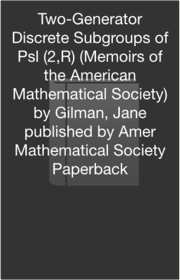

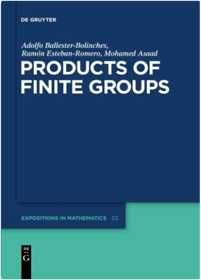
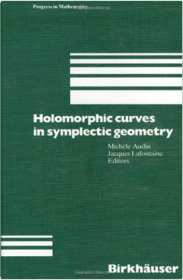
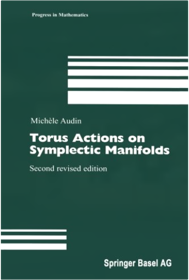

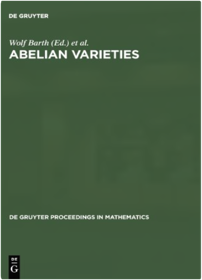

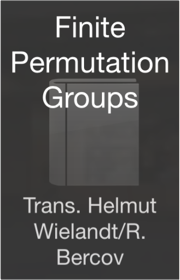
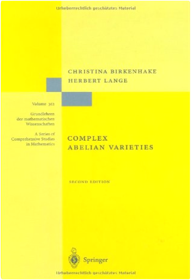


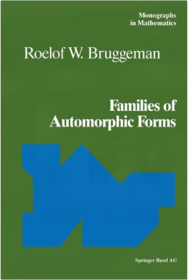



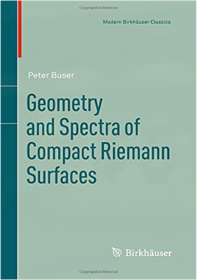
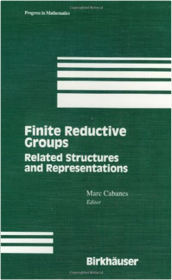

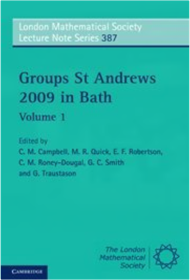
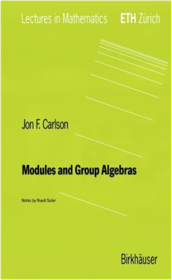





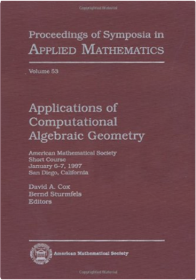

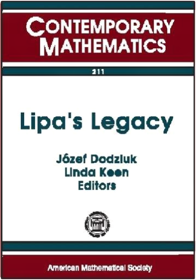
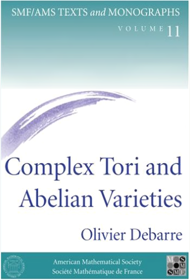

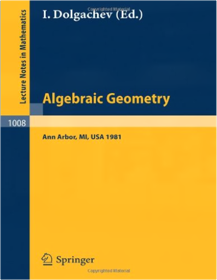


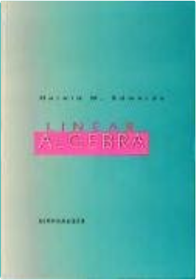
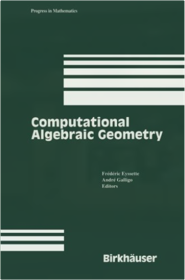

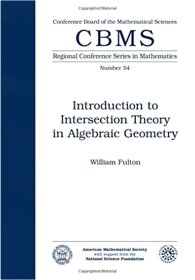
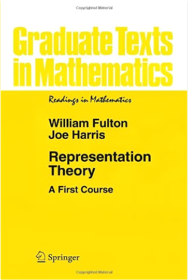
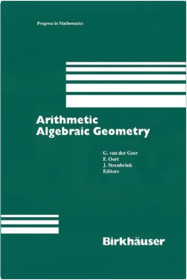
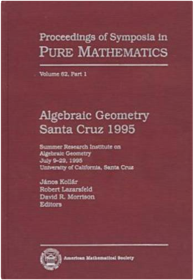

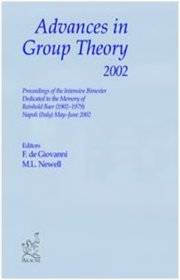

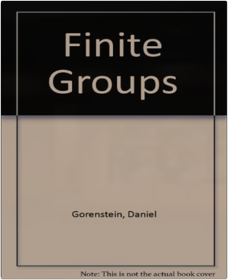

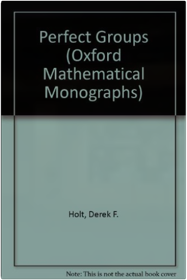

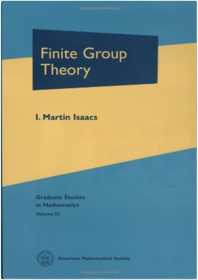
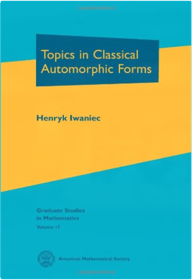
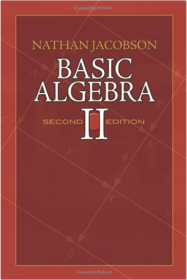



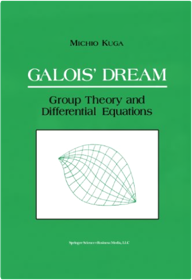
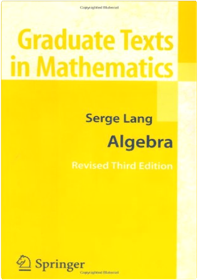
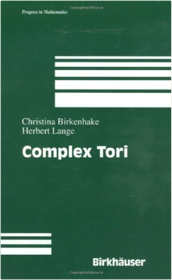
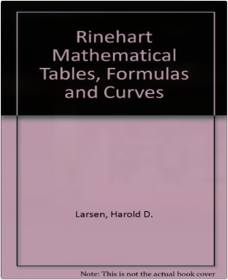
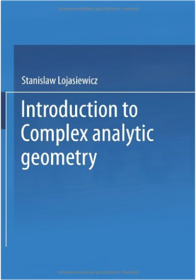
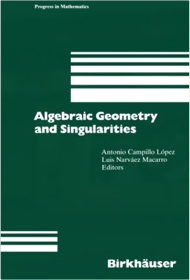
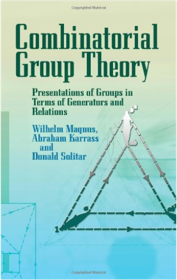

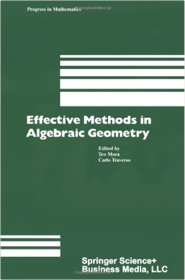
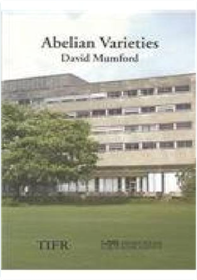
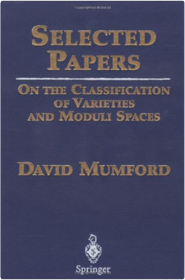

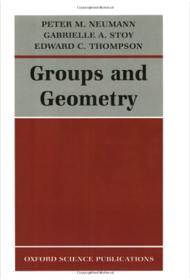

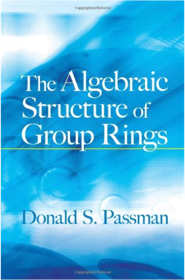
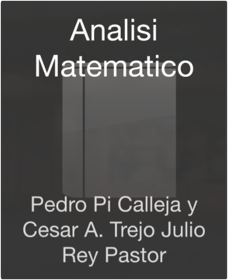
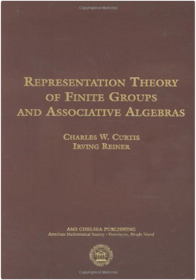
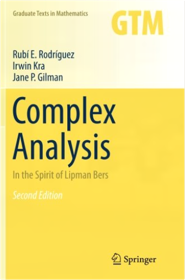
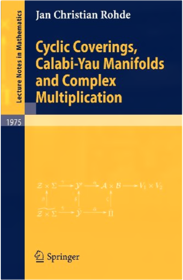
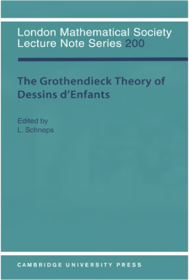
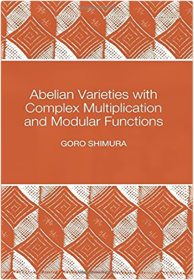
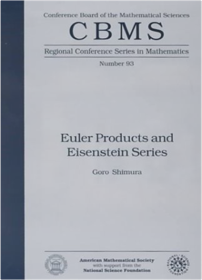
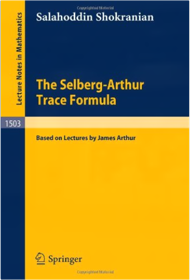
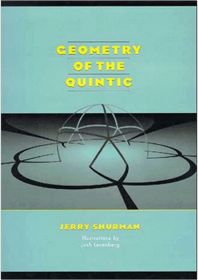
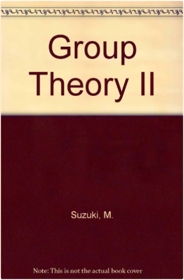



 Made with Delicious Library
Made with Delicious Library